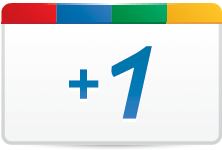You became a chiropractor to serve people, not an insurance company. You deserve to run a business that aligns with your values, supports your family and lights you up. Cash-based care isn’t just a pricing model – it’s a philosophy rooted in freedom, trust and respect for your patients and for yourself. Here's why - and how - to do it.
Put Good Chiropractic on Top
Ever wonder what's driving the consumer public's opinion of chiropractic in the United States? You might be surprised. In the past, you might have blamed organized medicine, drug companies or others for negative opinions about chiropractic. Today, things are different.
Many people use the Web as their source of information. A 2003 study estimated that "a minimum of 6.75 million health-related searches are being conducted on the Web every day."1 The word chiropractic is searched more than 2.7 million times a month.
When I Googled chiropractic, here is what I found as the first listing: "Chiropractic - Wikipedia, the free encyclopedia." According to Wikipedia, "Many studies of treatments used by chiropractors have been conducted, often with conflicting results. Manual therapies commonly used by chiropractors are effective for the treatment of low back pain, and might also be effective for the treatment of lumbar disc herniation with radiculopathy, neck pain, some forms of headache, and some extremity joint conditions. The efficacy and cost-effectiveness of maintenance chiropractic care are unknown. Chiropractic care is generally safe when employed skillfully and appropriately. Spinal manipulation is frequently associated with mild to moderate adverse effects, with serious or fatal complications in rare cases." (Emphasis added)
Believe it or not, that's not as bad as a few other sites, but certainly not what we would like inquiring consumers to be reading.
Next came the local listings for DCs in my area. After that came the ACA Web site and our ChiroWeb site. The next listed sites were Medline Plus and the National Center for Complementary and Alternative Medicine. Both of these sites made pretty basic, plain-vanilla statements about chiropractic. These were followed by "Images for Chiropractic" and then YourSpine.com.
But then I saw "Chiropractic - The Skeptic's Dictionary - Skepdic.com." Needless to say, this Web site is not very complimentary. Its section on chiropractic opens with this quote: "Chiropractic is the most significant nonscientific health-care delivery system in the United States. – William T. Jarvis, Ph.D." The site goes on to state that "there is no scientific evidence for spinal subluxations and none have ever been observed by medical practitioners such as orthopedic surgeons, neurosurgeons, or radiologists." And from there, it just gets worse.
The problem is that this anti-chiropractic information appears on the first page of the Google results, just after a couple of definition sites, a government Web site and only three pro-chiropractic Web sites. Skepdic.com somehow comes before all other chiropractic sites except those mentioned above, including the International Chiropractors Association, the Foundation for Chiropractic Progress, all chiropractic colleges, and all chiropractic state associations.
Fortunately, the folks at Google have finally given us a mechanism to influence its ranking system. As you conduct a search on Google, you will find a little icon on most of the search-results pages (not all; I don't know why) that looks like this:

As you mouse over the icon, you will see the phrase, "Recommend this page." While the program is still getting off the ground, the +1 recommendation icon will soon be seen on most Web sites, just like a Facebook or Twitter icon. (DynamicChiropractic.com already has them on all pages. For example, visit the DC.com home page and you'll see the icon just below the top toolbar, under the "Reader Services" button). This new program will be used in Google's highly complicated ranking and referring algorithm to provide greater exposure to recommended Web pages. This program will also tell people you know (or are connected with, like your patients) which sites you recommend.2-3
So here is what you (or your assistant) need to do. It will only take about 5 minutes. Go to Google and type in chiropractic as the search term. (Your results will be different than mine, which seem to change every time I re-enter the same search term.) Then quickly browse through the first 10 to 20 pages of results. Most of the pages should have the +1 icon right after the Web page title. (Again, for some unknown reason, some don't have the icon. When they don't, I just go to the next page in the search results.)
When you see a Web site representing an organization or entity that supports chiropractic (Dynamic Chiropractic, ChiroWeb, the Foundation for Chiropractic Progress, a national chiropractic association, a chiropractic college, a state chiropractic association, etc.), click on the +1 icon to recommend it. It's really that simple and doesn't you cost anything. After that, you can click on the +1 icon as you visit various chiropractic Web sites.
If we all do it, we can increase the exposure of important chiropractic information and hopefully move the good chiropractic Web sites ahead of the bad ones. Wouldn't it be nice to see the anti-chiropractic Web sites listed after the first 10 search-results pages? Now that's positive PR!
References
- Eysenbach G, Kohler C. What is the prevalence of health-related searches on the World Wide Web? Qualitative and quantitative analysis of search engine queries on the Internet. AMIA Annu Symp Proc, 2003;2003:225-229. www.ncbi.nlm.nih.gov/pmc/articles/PMC1480194/
- Google+ Webmaster Frequently Asked Questions. www.google.com/support/webmasters/bin/answer.py?answer=1140194
- For more information about the Google+1 icon, visit www.google.com/+1/button/.
Read more findings on my blog: http://blog.toyourhealth.com/wrblog/. You can also visit me on Facebook.


